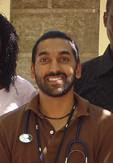This blog is about Kenyans Exploring Kenya, a trip I decided to join. In my case it would be IEK, pronounced “EEK,” or Indian Exploring Kenya. The main reason for going on this trip was for the experience. It turned out not to be fun, just as I suspected.
At the outset, “African time” struck our departure which actually turned out to be in my favor. Despite having gone to sleep early on Thursday night, I woke up at 6:35 am.
We drove north passed Kisumu. We stopped at Raila Odinga’s house in Bondo. He was not there. His caretakers wouldn’t let us in.
We then drove to his childhood home where his father is buried. There is a museum on the site. It was interesting. I discovered that Old Man Odinga was the first Vice President of Kenya, then jailed by Kenyatta and replaced by Moi. He was also an unsuccessful presidential candidate in 1992. Perhaps, it’s a good thing he didn’t succeed – he died two years later. Or perhaps that’s why he died.
After visiting that site, we drove to
When we finally arrived at
After all that dancing, I had to shower. It was being used in an olfactorally offensive way, while I was cleaning myself off. That was a new experience…
We slept in the restaurant. They moved all the furniture and cleaned the floor of all the mud tracked in. We laid the mattresses down and just slept side, by side, by side.
In the morning, we woke up at 6 am so that the restaurant could prepare to be opened for business. We did very little. The plan was to go to Port Victoria and possibly take a boat to
Busia was like Sirari (the border town near here between
Then we drove to Kisumu. The plan was to camp on the beach but that fell through. We did stop by the campsite and hang out. But then we decided to stay at some sort of church institution. They had their own mattresses and a place indoors to stash us. That was nice. It rained so much more that night and I’m very glad that we did not have to camp. The noise on the metal roofs was deafening.
We ate. I asked a lot of different people about how many KEK’s they’ve been on and which was their favorite and which was their worst. It seems that the overall consensus was that this KEK was the worst one. Lucky me.
That evening, I hung out with the women mostly. One of the interesting things about the trip was the loss of the work-related hierarchy. Although it was Marico and Jackson (management) who got rooms at the hotel, overall the relationships between all the Kenyans reverted to a more egalitarian basis. With hat phenomenon was also the assumption of the traditional gender roles – the women cooked and washed the dishes, the men just sat around and ate. Similarly, I dropped the role of medical expert and assumed a posture of meek Mizungu accompanying the Kenyans, completely out of his element. I deferred to everybody else regarding all the decisions and goings on. At one point, I ate a banana on the bus. I didn’t know what to do with the peel, for there were no obvious trash receptacles. Like I said, TIA. I had asked Joseph and after some consideration, he just threw his out the window. I felt uncomfortable with this littering. Eventually, I spotted something that potentially could have been a trash can. As I got up to throw the peel away, Joseph grabbed it from me and tossed it out the window. He told me, “You shouldn’t be so bothered by such a small thing.” Hmmm.
Then that evening, I ate beans and rice in advance of the final preparation of our own food. I liked it, I was hungry, and it was available. However, when the main meal was prepared, I declined a plate citing that I was already full. All the women kind of clucked around me like mother hens and
Our last day saw us in the
It rained like crazy again that night. I escaped the vehicle as quickly as I could. The driver had to hurry to catch me to bid me good bye. Man, what a trip.



No comments:
Post a Comment